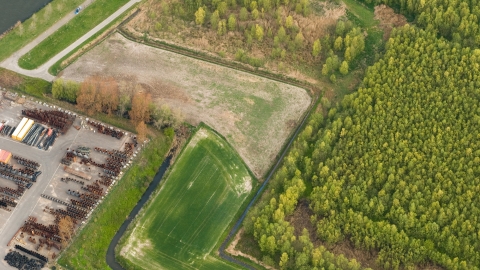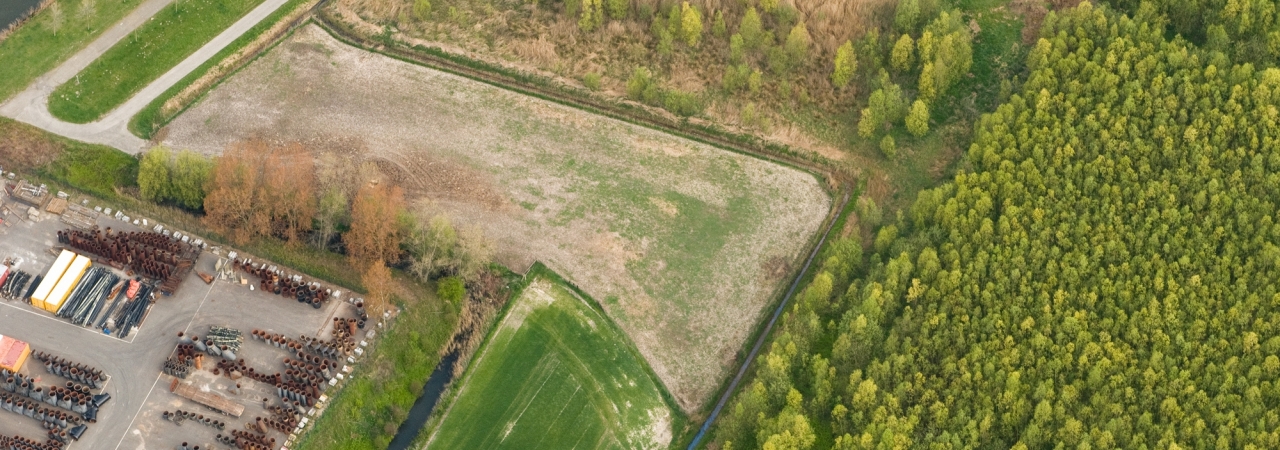In the middle of the 16th century, Ghent was linked with the Braakman (and thus the sea) by a canal. Where this canal (the Gentse or Sasse Vaart) ended at a tributary of the Braakman, in 1551 a lock (sas) was built in the sea dyke. Around the lock, a settlement grew up. The locks were destroyed by the Sea Beggars in 1572 and the village burnt down. When the locks were restored, a square redoubt was built around them, with a bastion on each corner plus one extra on the east side.
After Sas van Gent was taken in 1583 by Alexander Farnese, the later Duke of Parma, the fortifications were improved and extended. On the south-western side, at some distance from the redoubt, there was a wall with bastions and on the north-western side, an extension in the form of a crownwork. The whole fortification was surrounded by a moat with counterscarp. The core of the new fortification was the original redoubt which was given the name “Castle” or “Hooge Sas”.
After Sas van Gent was captured by Prince Frederik Hendrik, the States expanded the stronghold on the eastern side of the canal with a wall incorporating three bastions. On the south side, there was a hornwork that was dissected by the canal. The stronghold lay on the western bank of the Canisvlietkreek. On the opposite side, the States built another hornwork which was called Het Pas. A kilometre to the south, on the eastern bank of the canal, was Fort Sint-Anthonie which was built in the 1580s and which served as a military outpost. This large square redoubt with bastions on each corner was also given a hornwork on the south side.
In the second half of the 17th century, the stronghold was radically improved and extended. The layout was largely abandoned and “The Castle” was demolished. Sas van Gent became a sizeable stronghold with seven bastions, five ravelins and heavily armed counterscarp with weapon posts extending far inland. The canals were wide and the bastions and embankments were partially bricked.
An interesting feature in the stronghold was the water flour mill, a tidal mill which was built in the embankments between the Zeeland and Holland bastions. There was also a bomb-free bakery.
The three westerly bastions and a ravelin were provided with pitheads which came out in various mines under the outer defences. If the outer defences were captured by the enemy, they could detonate the explosives in the mines.
In 1788, the Canisvliet between Sas van Gent and Het Pas was closed, as part of an extensive flooding system between the Braakman and Hulst. In the dam, a flood lock was constructed which allowed the lands between the Autrichepolder (Westdorpe) and the Zuiddorpepolders to be flooded. The lock was guarded by a battery on Het Pas.
The stronghold was abandoned in 1816, after which the defence works were gradually demolished. Today all that remains is the bastion Generaliteit with the mill on top. The mine chambers in the bastion have been partially dug out. The surviving parts of the water flour mill were restored in 1989-1990. Other parts of the stronghold may still be present as foundations in the ground.



